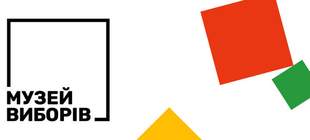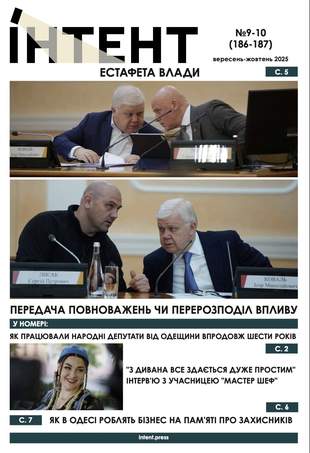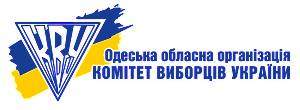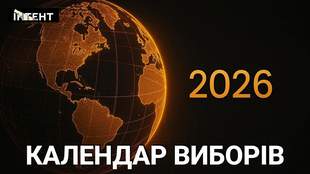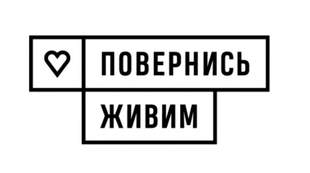Меню
Social networks
Sections
July 28, 2024, 7:50 a.m.
The war boosts digitising everything quickly: how Odesa museums preserve cultural heritage
Цей матеріал також доступний українською542
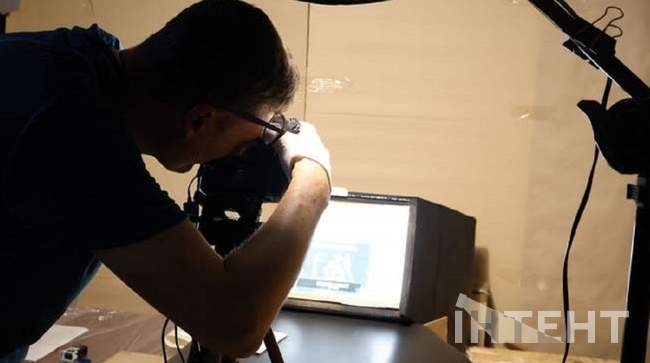
Photo by Intent
In Odesa, the Archaeological Museum, the Museum of Western and Oriental Art, and the National Fine Art Museum began digitising their archives and cultural heritage items before the full-scale invasion. However, it was the war that accelerated their work and made their collections evacuated to safer places available to Ukrainians and the world.
After all, the content of exhibits after digitisation can be useful not only for the museum's internal use but also for presentation to everyone. In addition to historical information, information about the artefact, its condition, etc., is stored in digital format.
Read the Intent material to learn how museum staff grasp the opportunity to restore cultural heritage and create virtual exhibitions.
Students were engaged in digitising the collections.
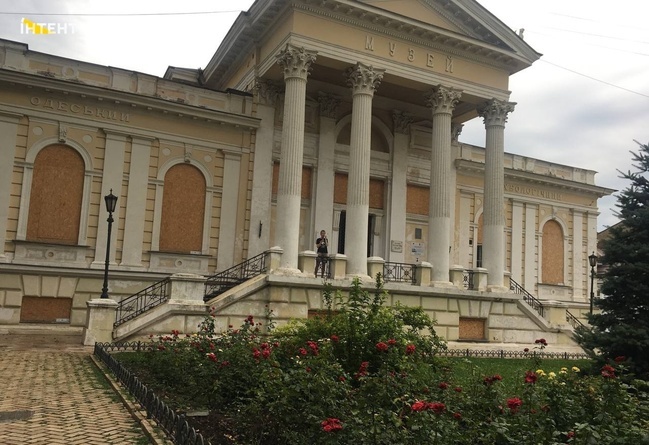
Odesa Archaeological Museum. Photo by Intent
The Odesa Archaeological Museum of the National Academy of Sciences of Ukraine is the oldest archaeological museum in Ukraine. It serves as a research institute within the Department of History, Philosophy, and Law of the National Academy of Sciences of Ukraine. It is part of the Southern Scientific Centre of the National Academy of Sciences of Ukraine and the Ministry of Education and Science of Ukraine. Next year, the museum will celebrate its 200th anniversary.
The museum has been closed since the beginning of the war, but it plans to reopen in August this year with an exhibition titled Zmiinyi: The Island Protected by the Gods, showcasing artefacts discovered on the island.
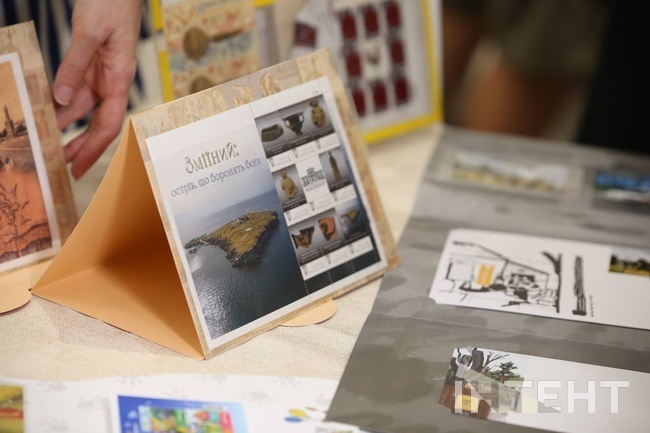
Artefacts found on Zmiinyi are now on stamps. Photo by Intent
"This is our first project since the start of the full-scale invasion — we are very excited and will share more details soon. This project is supported by the Partnership Fund for a Resilient Ukraine, financed by the governments of Canada, Estonia, Finland, the Netherlands, Sweden, Switzerland, the United Kingdom, and the United States, with mentorship from the Odesa National Art Museum," the institution indicated.
Museum researchers have long been associated with Zmiinyi Island; they have conducted numerous expeditions there, including the first underwater excavations in the independent Ukraine.
As part of the exhibition project, the museum, in collaboration with Ukrposhta, issued nine stamps featuring images of ancient artefacts. These discoveries help to deepen our understanding of the life and culture of the ancient peoples who inhabited southern Ukraine. The exhibition will also include 3D images of some museum exhibits.
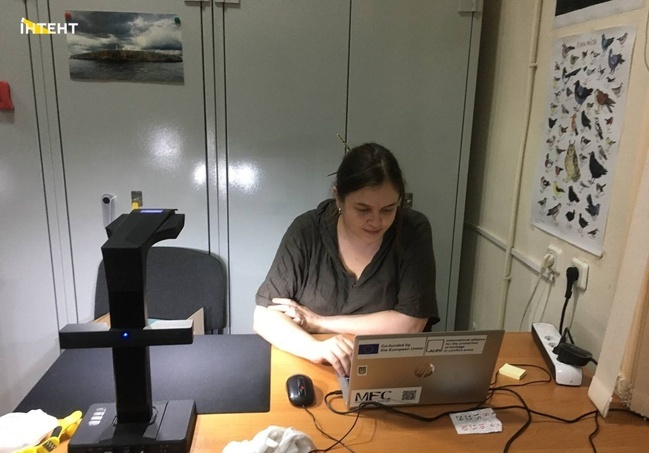
Maria Lobanova, deputy head of the Department of Scientific Processing and Storage of Collections. Photo by Intent
"People will be able to see the exhibition online. Some items are in a safe place; others are too valuable to be displayed publicly, so we offer 3D images and detailed descriptions. The photos on the stamps were taken while we were digitising the museum's collection," explained Maria Lobanova, PhD, deputy head of the Department of Scientific Processing and Storage of Collections.
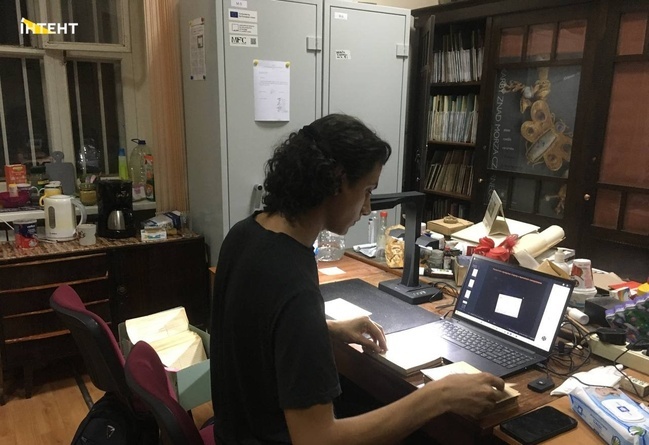
Students digitise museum cards during their work placement. Photo by Intent
So far, about 25,000 items have been digitised. The museum collaborates with UNESCO and other foundations to secure sufficient storage space for digital information.
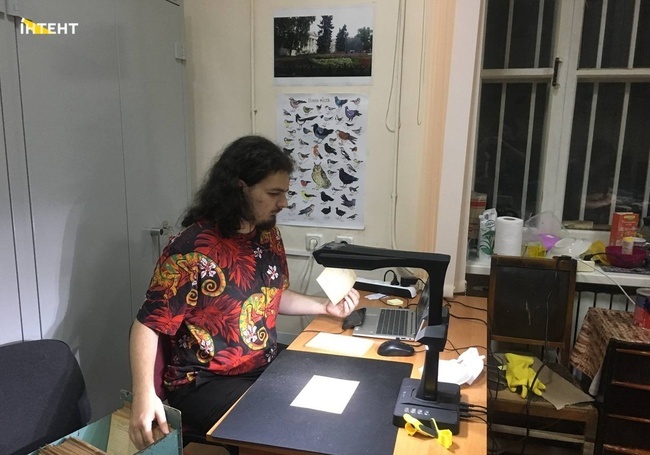
Students are helping the museum digitise cards as part of their work placement. Photo by Intent
It is worth noting that the institution houses the only Egyptian collection in the south of Ukraine, and the preservation of this collection is of particular concern to UNESCO.
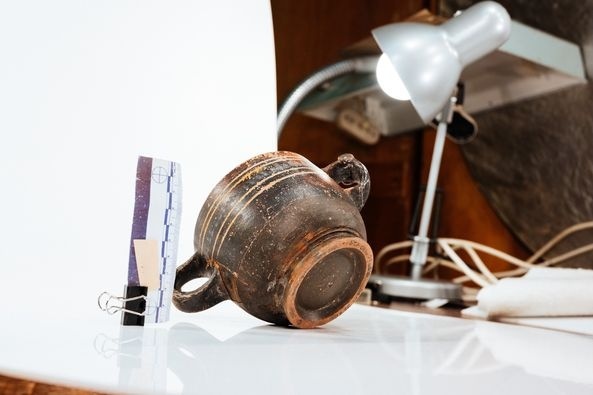
Photo by Museum for Change
The museum has applied for an American grant to support the 3D digitisation of its most notable exhibits.
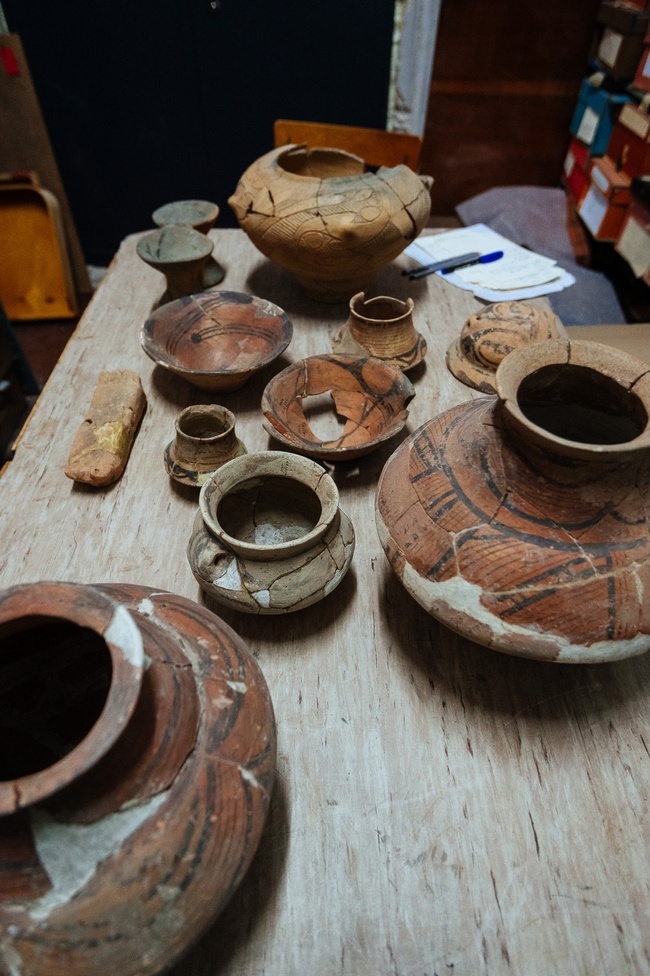
Photo by Museum for Change
Last year, the NGO Museum for Change, with support from UNESCO, organised the photographic documentation of exhibits from the Odesa Archaeological Museum. Experts photographed glassware collections from ancient cities in the Northern Black Sea region and dishes from the Trypillian culture.
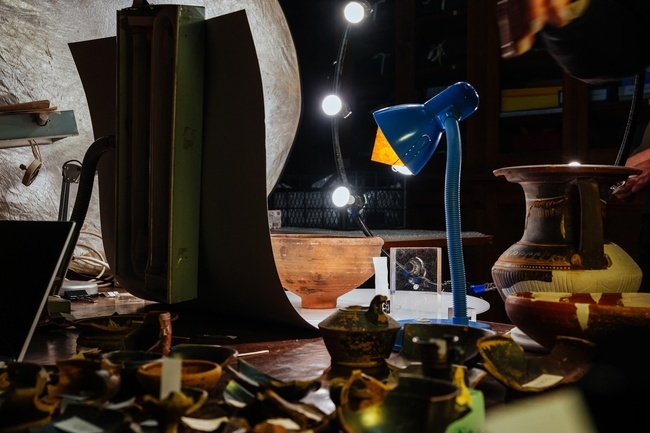
Photo by Museum for Change
"During the full-scale war, it is crucial to preserve information about our museum's collections as comprehensively as possible, as they are considered national treasures. When photographing our artefacts, we store the images in multiple formats, including RAW, to enable further identification of our items in case of an emergency. In this project, we focused on collections from unique monuments in Odesa and southern Ukraine," explains Lobanova.
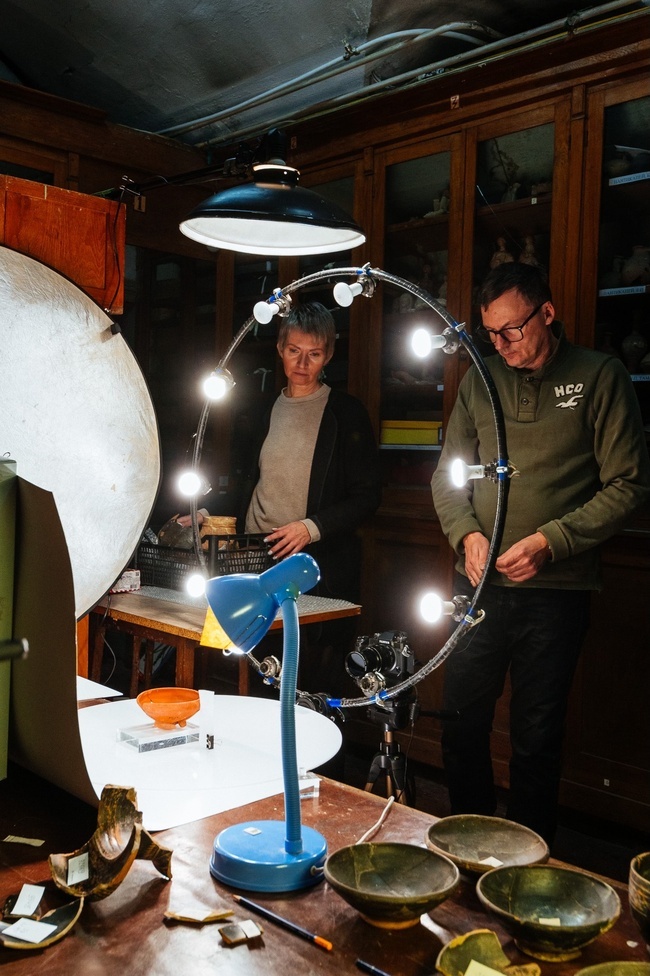
Photo by Museum for Change
She says that the war significantly accelerated the digitisation process: "Digitisation is not a single large project; it consists of a series of smaller projects that we worked on as part of our museum's scientific initiatives even before the war. We understand that in the modern world, it's easier to verify and process materials when we have an electronic database. The challenge was that we lacked the necessary equipment to do this quickly and had a limited staff. When the full-scale war began, this work intensified because we wanted to document our collections as quickly and efficiently as possible. And we are still working," she said.
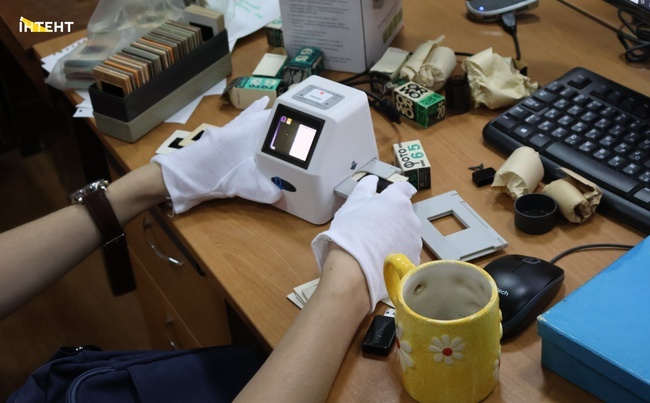
Digitisation of films from archival excavations. Photo by Intent
In September 2023, during the prolonged shelling by the Russian Federation, cracks appeared in the ceiling of the Odesa Archaeological Museum. It eventually led to a partial collapse of the structure. On 20 July, after a night attack by Russian forces, the museum’s windows and doors were damaged.
"We used to photograph artefacts with regular cameras, but now, with the help of a professional photographer, we use a special camera that captures the maximum amount of metadata. This format is accepted in international courts," Lobanova explains. "This means that if something unfortunate happens, we will be able to prove that the artefact belongs to us."
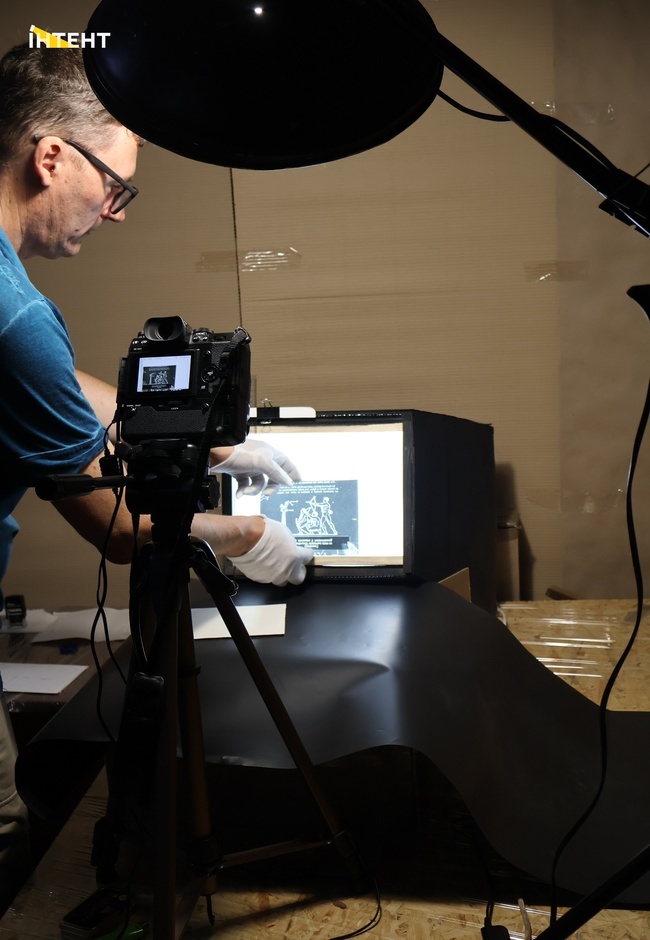
A photographer digitises the museum's artefacts. Photo: Intent
Currently, the museum hosts work-placement training, and students scan old films from archival excavations. With only three employees assigned to this task, the museum faces challenges completing it all. The scientists hope that the processed information will eventually result in both offline and online exhibitions, allowing the public to view these treasures firsthand.
Blackouts Slow Down Digitisation
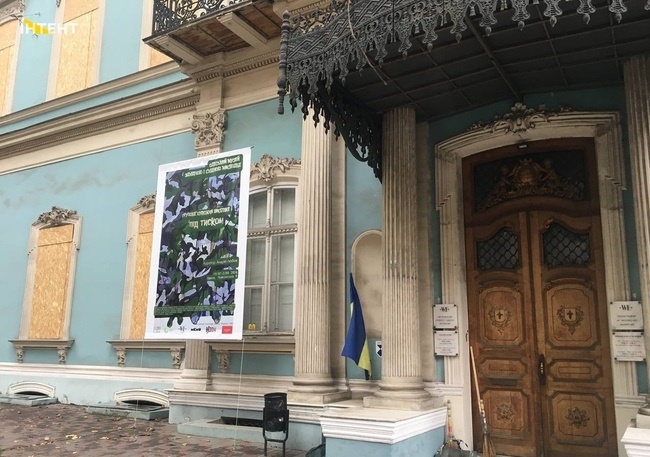
Odesa Museum of Western and Oriental Art. Photo by Intent
The Odesa Museum of Western and Oriental Art celebrated its centenary on 8 June 2024. The museum's collection, originally formed from small private collections, now encompasses an impressive array of paintings, sculptures, graphics, and decorative arts from around the world. The collection includes masterpieces by European artists from the 16th to 20th centuries, such as Frans Hals, Charles Cottet, Caravaggio, Alessandro Magnasco, Francesco Granacci, Bernardo Strozzi, and Pierre Mignard. In addition to European art, the museum also boasts a significant collection of Oriental art, featuring exhibits from China, Japan, India, and other countries. These include rare Chinese porcelain, Japanese prints, and Indian miniatures.
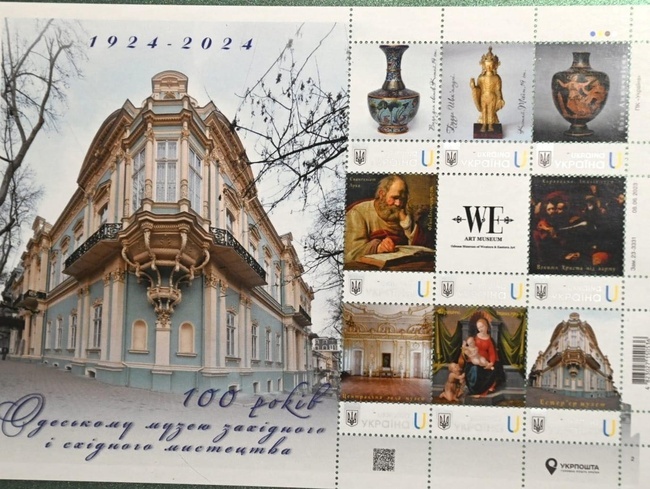
A special release of a postage stamp issued by Ukrposhta to mark the museum's 100th anniversary. Photo by Odesa Museum of Western and Oriental Art
Part of the museum’s collection, which was evacuated at the beginning of the war, is now being exhibited in Germany and Austria. The museum has long been familiar with digitisation, launching an online 3D tour several years ago.
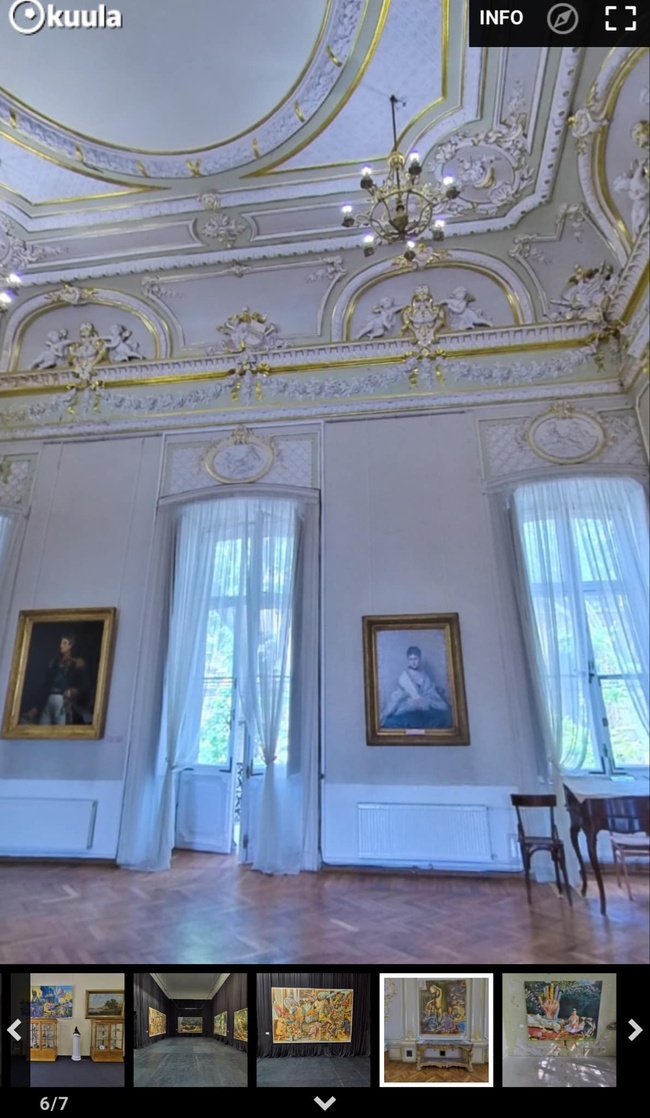
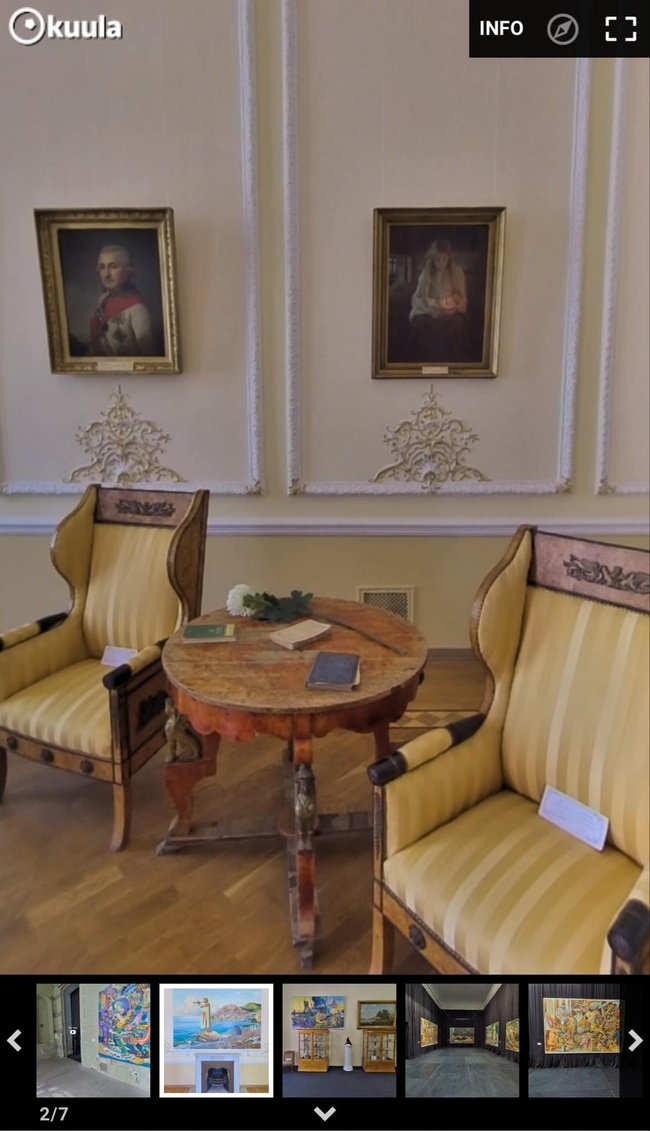
Photos from the 3D tour provided to Intent by the museum.
"We developed our first 3D tour of the museum 10-11 years ago, becoming the first cultural institution in Odesa to do so," says Yulia Tkachuk, Marketing and Communications Specialist at the Odesa Museum of Western and Oriental Art. The museum is currently digitising its collection, which amasses over 10,000 items, using book scanners and a 3D scanner.
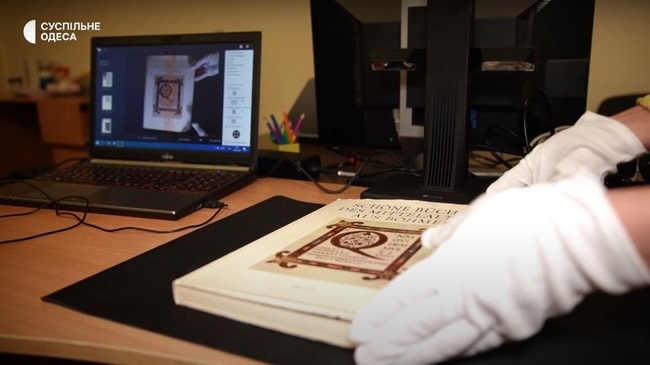
Photo by Suspilne
According to Tkachuk, the collection is being scanned and photographed, and each artefact is assigned a unique number: "We have a website, but unfortunately, it's been undergoing technical work since the beginning of the full-scale invasion, and we haven’t been able to resolve the issue yet. Our collection, which includes paintings, sculptures, and decorative items, is featured there, supplied with their historical background and annotations. The site also offers Ukrainian and English guides to the museum."
Although the museum's website is temporarily down, it remains active on Facebook, Instagram, and Twitter, showcasing its collections. "The war has stimulated us to find new means of communication, and social media are saving us. People often request specific works from us, and we provide high-quality digital photos supplied with annotations and research articles. They also ask for nostalgic photos from our halls," Tkachuk explains.
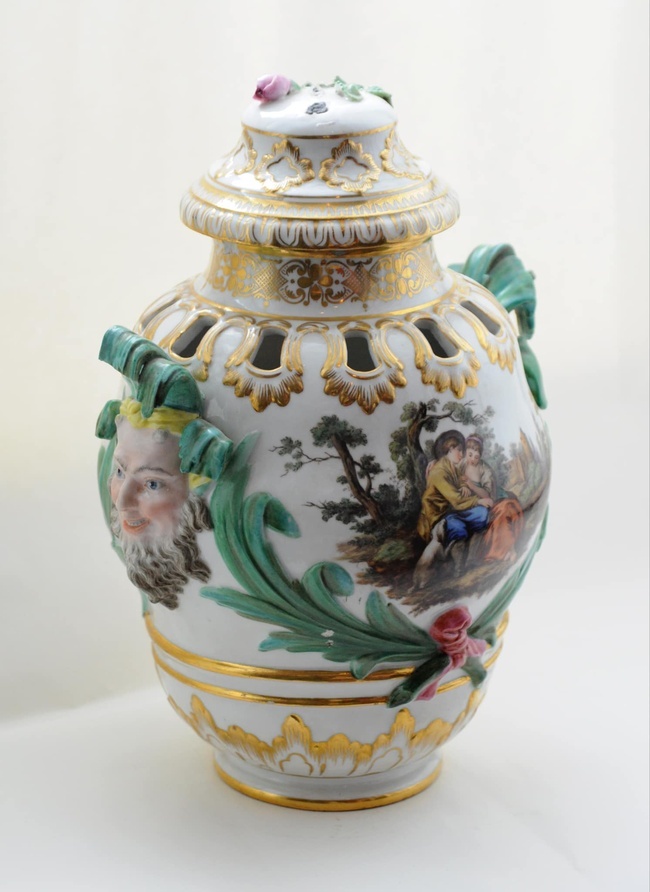
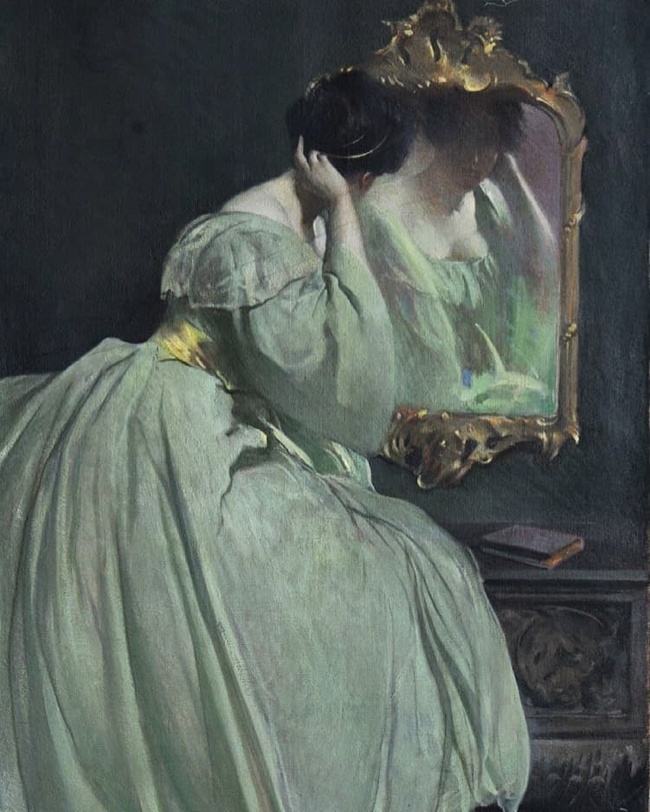
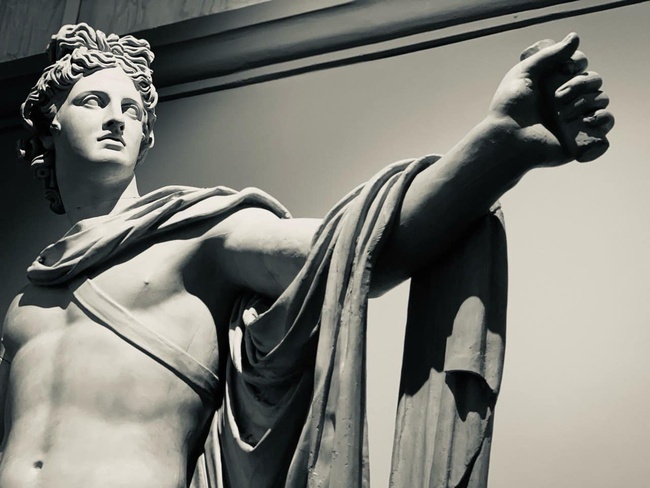
Photos of the exhibits provided by the museum
The museum is currently collecting materials for a digital conference, a project led by Deputy Director for Research Iryna Hlebova, a winner of the prestigious Italian Golden Apple Award, established in 1989. It honours women worldwide for outstanding professional achievements. "Compiling conference materials in digital format is a new initiative for us. However, the work and research of our staff are regularly published in online scientific and art history journals, both in Ukraine and internationally," says the Museum's communications officer.
Looking ahead, the museum plans to release its catalogues in digital format. "This is a meticulous and time-consuming process," Yulia explains.
When asked about the challenges the museum faces in its digitisation efforts, Tkachuk cites power outages as the primary obstacle: "You can't rely on generators for extended periods. When there's no electricity, there's no internet, which delays our work."
As a reminder, the museum was damaged during shelling by the Russian Federation on 20 July 2023.
To Show What No One Has Seen
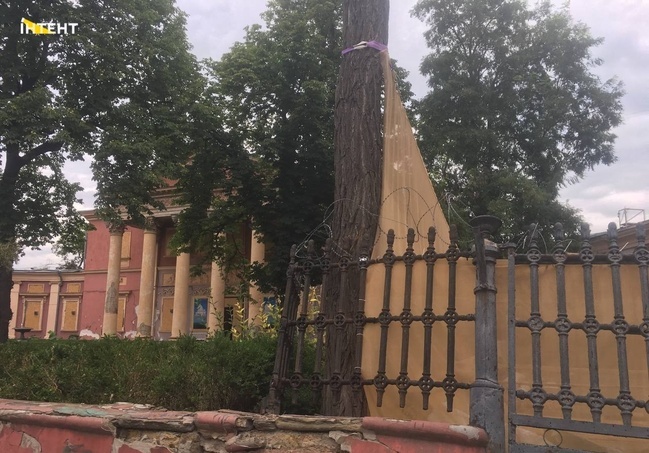
Odesa National Fine Art Museum. Photo by Intent
"The Odesa National Fine Art Museum was established in 1899 at the initiative of Odesa’s then-mayor, philanthropist, and collector, Grigorios Maraslis. The museum, located in an old palace in downtown Odesa, houses an outstanding collection of art objects. A revival of the museum as a key cultural landmark of the city and the country began in 2017 when artist Oleksandr Roitburd (1961-2021) took over as its director. In 2021, the museum was granted the status of national importance. Despite facing significant challenges, including reduced funding, staff cuts, and damage from a Russian missile attack, the museum continues its exhibition, research, and educational activities during the ongoing war," reads the city's website.
In February 2023, the museum announced the digital publication of its scientific archive on a special multimedia online platform available in both Ukrainian and English.
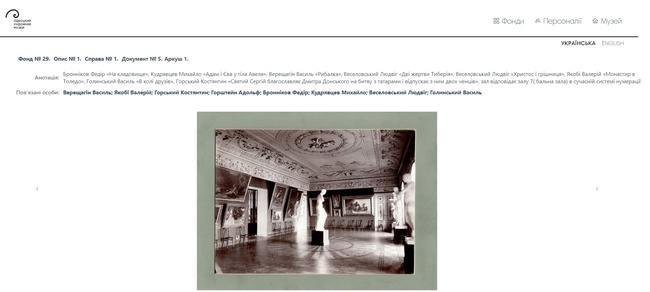
Digitised materials from the archive. Photo by Intent
Museum staff have meticulously described and digitised critical documents related to the museum’s history, including photographs, exhibition plans, posters, articles, materials about prominent staff members, and multimedia content about artists and the artistic life of Odesa across different eras. In total, over 5,400 files from over 30 museum collections have been digitised.
"Traditionally, the scientific archives of Ukrainian museums have restricted access, posing challenges even for scholars. We are proud to be among the few Ukrainian institutions changing this practice by opening our archives not only to researchers but also to the general public. Digitising and publishing archival materials is especially crucial during the war when physical media are at risk of destruction. This effort is also a vital step towards promoting the openness and accessibility of historical research, particularly within the context of decolonisation," says Kyrylo Lipatov, former head of the museum's research department.
The materials featured on the platform include a collection of glass photographic negatives from the 1910s to the 1950s; previously unknown works, photos, and videos; manuscripts; documentation of artistic events by Oleksandr Roitburd; records of changes in museum exhibitions over time; and new personal collections.
This project was made possible through funding from the 2022 Stabilisation Fund for Culture and Education of the Federal Foreign Office of Germany and the Goethe-Institut, an initiative to support cultural and educational organisations affected by the war against Ukraine.
Thanks to funding from the UNESCO Emergency Fund for Heritage, the museum now plans to digitise 3,000 maps, as reported by the NGO Museum for Change. Researchers diligently transfer information about artworks to the digital catalogue daily to safeguard them from potential physical destruction.
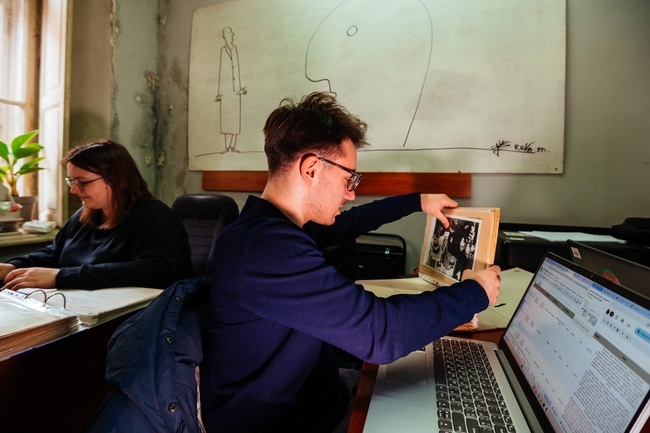
Photo by Museum for Change
"We have been continuing the process of digitising our collection since the spring of 2022. For our museum team, this effort goes beyond merely adopting a new format for information storage. It’s about creating conditions that allow overseas and Ukrainian researchers to access our collection. In this project, we aimed to capture not only the most prominent works and those featured in exhibitions but also pieces that haven’t been displayed for a long time," explains Volodymyr Damaskin, Head of the Research and Education Department.
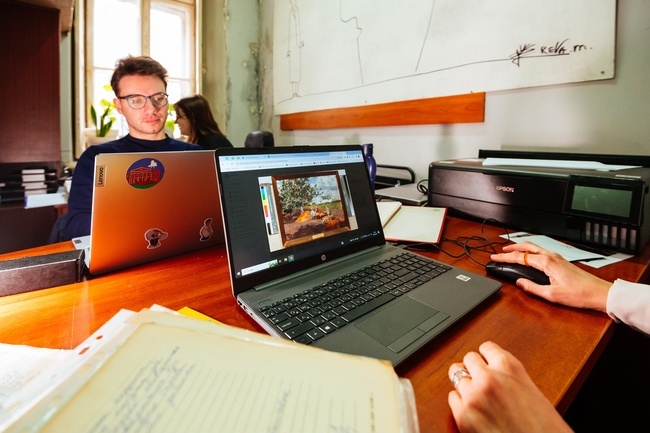
Photo by Museum for Change
Notably, the Centre for Museum Digitalisation (Lviv) also assists the Odesa Art Museum in digitising its collections and automating processes according to international standards.
As a reminder, on the night of November 6, 2023, almost on the museum's 124th anniversary, a Russian missile struck the road near the institution. The museum's windows overlook this road - they had been under repair after the previous attack, and this time, that part of the building was the most damaged, too.
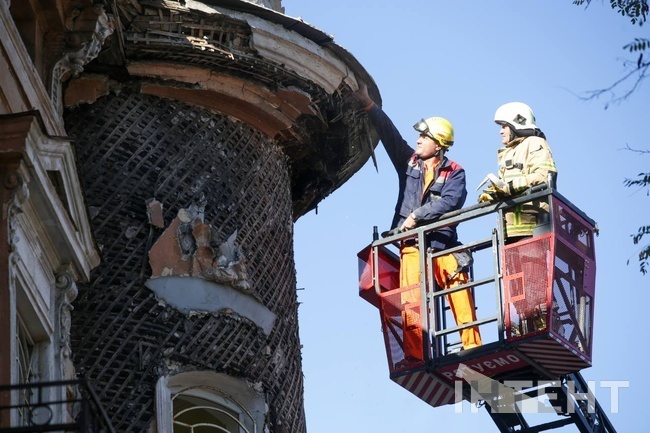
Odesa Fine Art Museum after the "greetings" from the Russians. Photo by Intent
"Approximately half of the museum's halls were damaged, with significant damage to the ceiling and walls," reported Kateryna Kulai, the museum's director at the time.
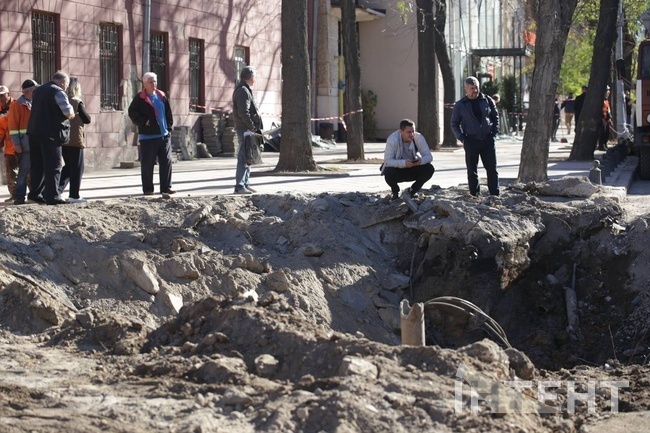
Odesa Fine Art Museum after the "greeting" from the Russians. Photo by Intent
In 2022, just four days before the Russian invasion, the OFAM hosted an event where visitors were invited to visit the museum free of charge. The announcement read, "Research shows that visiting a museum can calm you down and help you cope with stress." Today, museums work hard to restore their cultural collections and provide comfort not only to themselves but also to art lovers, making Ukrainian heritage accessible to Ukrainians and the world.



